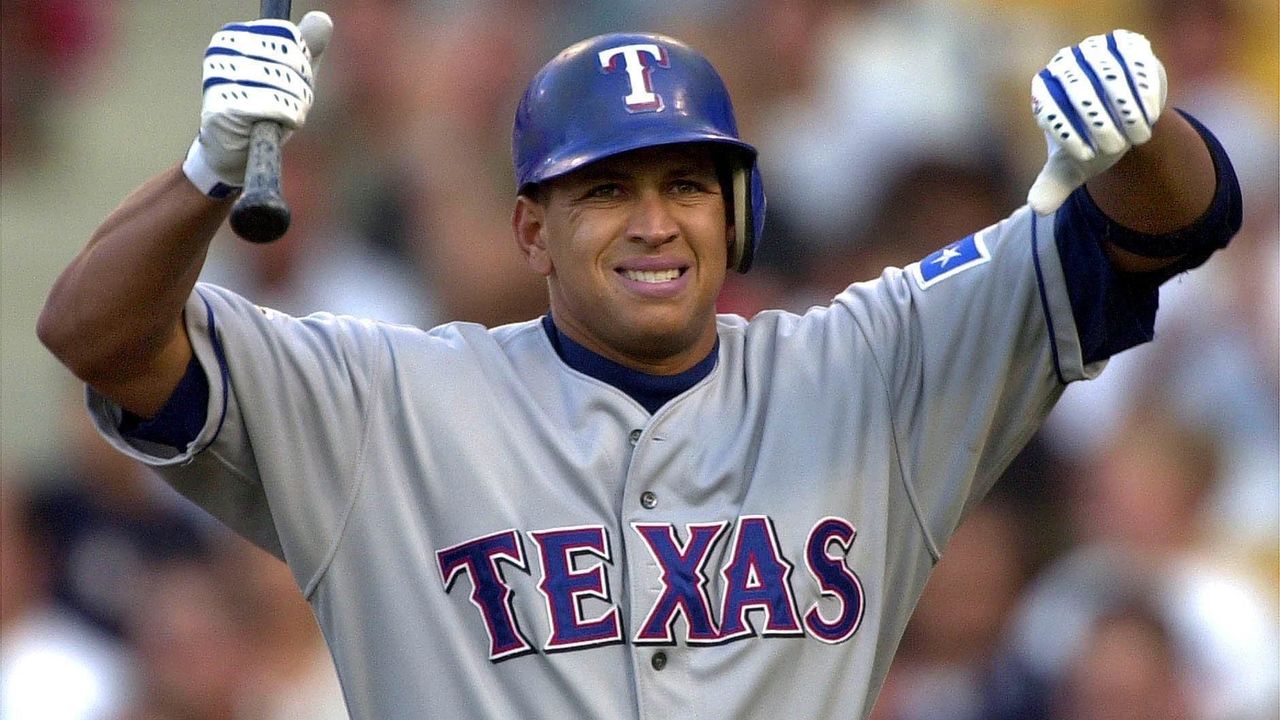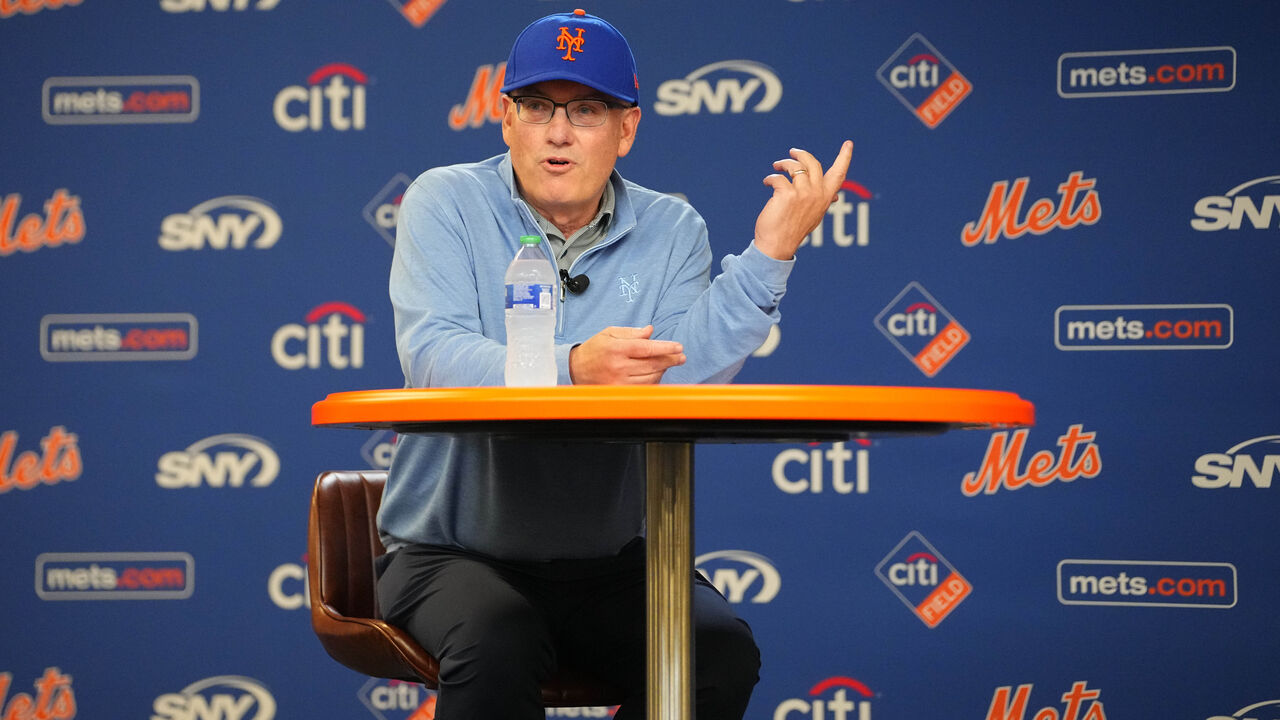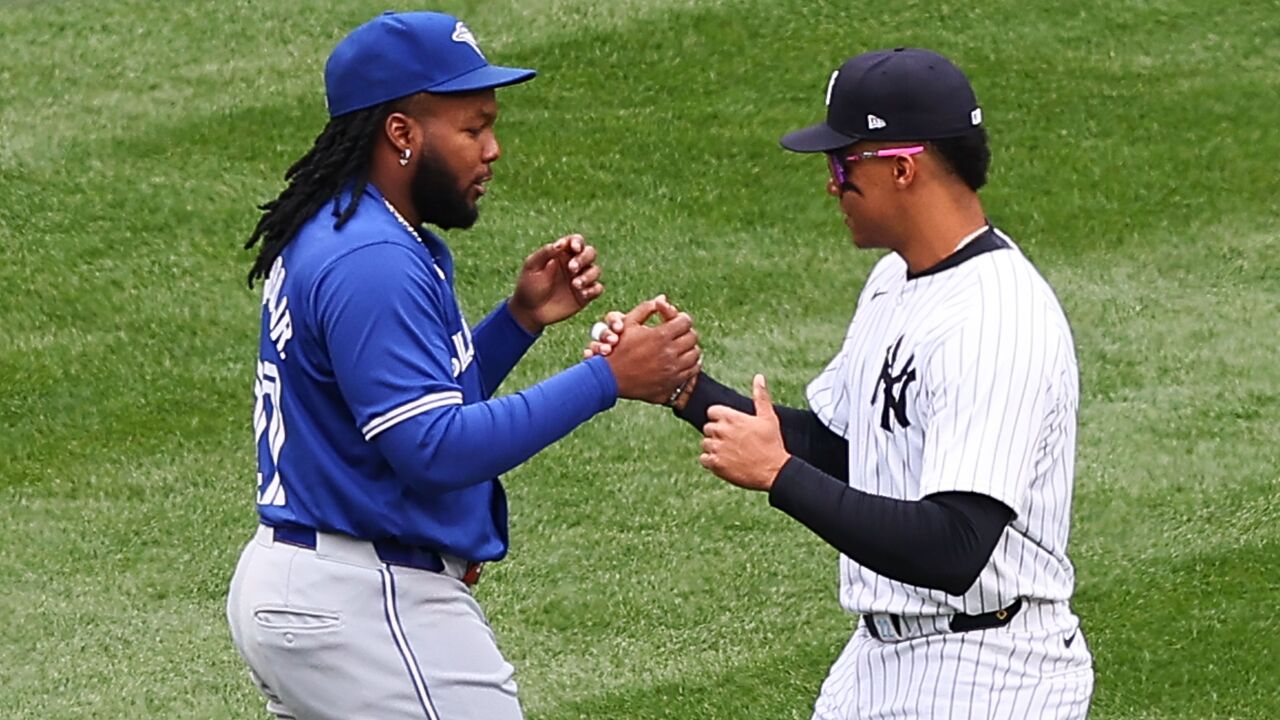Juan for the money: The ripple effects of Soto's megadeal
"OMG" was a rallying cry for the New York Mets during their remarkable second-half surge, and OMG took on a new meaning as the details of Soto's record 15-year, $765-million deal emerged Sunday night.
There were few comparables for Juan Soto in free agency; rarely do players this good and this young become available. The last time star-level players entered the open market at age 26 was in the 2018-19 offseason when both Bryce Harper and Manny Machado did it.
Soto's contract has far-reaching implications on the field. Off the field, it may impact future collective bargaining and widen the gulf between franchises that are willing and unwilling to spend.
A record deal, but is Soto worth it?
Despite elevated expectations, the contract still beat public forecasts of term, total dollars, and amount deferred. Harper and Machado didn't sign that long ago, yet Soto surpassed the combined value of their deals.
And unlike Shohei Ohtani's record deal, there's remarkably no deferred money here. Soto's deal is worth some $300 million more in present-day value than Ohtani's inflation-adjusted valuation ($460 million). That's a giant leap.

Using Harper and Machado as comps while accounting for MLB revenue growth and adjusting for Soto's superior three-year performance to those two players, we arrived at a 13-year, $635.5-million valuation for Soto in November.
We weren't far off on the annual average value - estimating $48.8 million versus the actual $51 million - but, like most public forecasts, we fell more than $100 million short.
Using inflation-adjusted dollars, Soto's deal rivals the one Alex Rodriguez signed with the Texas Rangers in 2001 entering his age-25 season.
Rodriguez was the most valuable free agent of all time. He was three years younger than Barry Bonds was when Bonds departed the Pittsburgh Pirates to sign a then-record six-year, $44-million deal with the San Francisco Giants before the 1993 season.
Rodriguez was coming off a 41-homer, 9.5-WAR season as a shortstop when he left the Seattle Mariners for a then-record 10-year, $252-million contract with the Rangers. Adjusted for U.S. inflation, A-Rod's pact is worth $445 million.
Since he signed that contract, the average MLB player's salary has increased 120% while MLB revenues have increased 223%. If A-Rod's deal were signed today, based on the rate of player salary inflation, it would be worth $554 million over 10 years. Expanded to the 15-year term Soto got, A-Rod's deal would have been worth $832 million.
Whether Soto is worth this contract is another question.
While he's an extremely young and rare offensive talent, Soto isn't 2001 A-Rod, who averaged 7.8 WAR over the three seasons leading into his free agency. Soto averaged 6.2.

Rodriguez also played on the left side of the infield. Soto is a poor defender who seems likely to spend much of this contract as a designated hitter.
While an elite DH can be a difference-maker like David Ortiz was for the Boston Red Sox, Ortiz never earned more than $16 million in a season.
A-Rod was worth his deal: He produced 424 homers and 72 WAR over the first 10 years following his signing. Will Soto be worth it? Time will tell. The aging curve can be less merciful to corner-position types.
An emotional market
MLB revenue growth since the Harper and Machado deals were signed doesn't explain this contract: League revenue rose 13.6% from 2018 to 2023, the last full year in which we have data.
Soto enjoyed something of a perfect storm of desperate large-market clubs pushing Steve Cohen, the game's richest owner, to bid more and more.
The Yankees' final offer was for $760 million. The Red Sox and Blue Jays were reportedly offering around $700 million. But no one was going to outdo Cohen. While data and analytics have made player evaluation more of a science this century, pursuing Soto carried an emotional element: It was a good old-fashioned bidding war.
For some historical context, it took 14 years for Rodriguez's total value to be surpassed by Giancarlo Stanton's deal in 2015, but only one year for Soto to top Ohtani's contract. It could be years before the value of Soto's deal is surpassed.
Gap grows below singular Cohen
The contract immediately widens the gap between the haves and the have-nots (including those unwilling to spend). The news reignited conversation about baseball's uneven financial playing field.
Consider that the Pittsburgh Pirates have spent less on their last 10 years of Opening Day payrolls combined ($731 million) than the Mets just guaranteed to a single ballplayer.
MLB is a different world from the other major North American pro sports teams. There were only five serious contenders for Soto. If a young superstar was on the market in another sport, every team - at least every team with cap space - would be bidding.

Could owners like Bob Nutting in Pittsburgh spend more? Certainly. But the divide between local revenue streams is enormous in MLB, even with significant sharing of revenues.
As we studied in November, most owners want to operate with a healthy profit margin. While each team's revenue streams are different, most owners have a net gap of $150 million-$200 million between revenues coming in and dollars going out to player compensation (this does not include other operating expenses).
Cohen is not most owners, though.
Cohen was the only owner to spend more on player compensation and luxury-tax payments last season than his club took in during its last full year of Sportico-reported revenues. The extra luxury-tax tiers and penalties that were negotiated in the last collective bargaining agreement to slow him down don't seem to be deterring him.
While more fan bases would like to have someone like Cohen writing checks, there simply are not that many billionaires - 759 in the U.S. - and fewer still who want to splash around in the professional sports pool.
The Mets have a huge advantage in spending power over almost all other teams. Until measures in the CBA force owners to spend, the gulf might only widen.
The deal also increases the gap in earning power between players. While MLB players enjoy unlimited earning potential in free agency, the open market is a land of riches reserved for the game's elite talents.
MLB players have the lowest median and minimum salaries among the major North American pro sports leagues. Most players who step on an MLB playing field never accumulate enough service time to reach arbitration or free agency.
As for the baseball games …
The deal will have ripple effects through so many areas of the sport, especially on the field.
Mets: They now have the makings of an elite lineup. They ranked seventh in wRC+ and ninth in position player WAR last season, and they're adding one of the game's top offensive forces to their batting order. The NL East, already arguably the toughest division in baseball, becomes even more talented.

Yankees: In theory, the Yankees shouldn't have been outbid - they generated 63% more revenue than the Mets in the last full year of revenues Sportico published. The Yankees ranked first in 2023 revenues ($720 million), while the Mets ranked 10th ($441 million).
Losing Soto is incredibly damaging for the Yankees in the short and medium term. The Yankees have an aging core and a weak farm system. They could have built around Soto as their foundational piece for a decade.
Moreover, if the Yankees knew they were acquiring a rental player, they probably wouldn't have sent such a haul to the San Diego Padres in last winter's trade for Soto. That trade package included pitcher Michael King, who posted a 2.95 ERA over 170 innings with the Padres.
Blue Jays: One must wonder what Vladimir Guerrero Jr. and Bo Bichette were thinking Monday morning.
The Blue Jays reportedly made offers in the $700-million range to Ohtani and Soto. They haven't been able to come to terms with Guerrero and Bichette on extensions, and both players are scheduled to be free agents next offseason.

It gets tougher for clubs to complete contract extensions as players get closer to the open market. Extensions will be even more difficult following the Soto deal.
The Blue Jays have a bottom-third farm system, their core players are on expiring deals, and they've fallen short on landing franchise-altering superstars. They could soon face a rebuilding period.
Red Sox: On paper, Fenway Park was the best fit for Soto. It ranks behind only Coors Field in favorable ballpark factors for left-handed hitters, and left field in Fenway is an ideal place to hide Soto's glove. The Red Sox also boast one of the most talented young position-player groups in the game. Soto could have made Boston's lineup elite.
However, Soto's decision to join the Mets is less damaging to the Red Sox than some other contenders. He's at least out of the division, and the Red Sox can spend elsewhere to address holes and strengthen a promising roster.
Dodgers: They'll be OK, but Soto would have helped their dynasty ambitions. Their best position players are now all over the age of 30. Still, few are showing any signs of aging, and the Dodgers have a good chance of signing young Japanese pitcher Roki Sasaki, who was just posted.
The biggest issue for the Dodgers is that Soto is back in the National League.
Travis Sawchik is theScore's senior baseball writer.